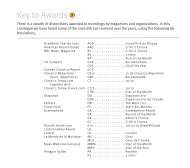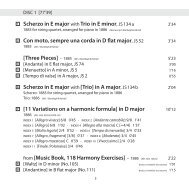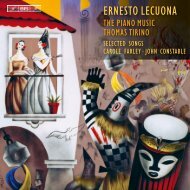MENDELSSOHN - Bis
MENDELSSOHN - Bis
MENDELSSOHN - Bis
Create successful ePaper yourself
Turn your PDF publications into a flip-book with our unique Google optimized e-Paper software.
ion nor mere mimic of earlier models. Indeed, novel harmonic progressions and<br />
modula tions, the inter polation of a written-out cadenza in the middle rather than<br />
near the end of the third movement, the effective distribution, reworking, and<br />
ornamenta tion of thematic mater ial, and an interest in unifying the entire work<br />
through cyclicism provide clear evi dence of the young composer’s original ideas<br />
and individuality.<br />
The Concerto in D minor entered the repertory only in the early 1950s, after<br />
Yehudi Menuhin ac quired an autograph of the work in May 1951 and presented<br />
its public première in Carnegie Hall on 4th February 1952. Since then, this ‘little’<br />
Men delssohn concerto has also been championed by other leading violinists. The<br />
work sur vives in two slightly dif fer ent editions: Menuhin’s undated auto graph,<br />
which was handed by Mendelssohn’s widow Cécile to Ferdi nand David, and later<br />
passed from his son Peter to a private collec tion, and an auto graph dated 6th May<br />
1823 (heard on this re cording) that was once in the possession of Clara Schu -<br />
mann and is now in the Deut sche Staats biblio thek, Berlin.<br />
Many listeners will be surprised to learn that the version of Mendelssohn’s<br />
E minor Concerto usu ally performed today differs in numerous details from the<br />
work originally not at ed by the composer in 1844 and premièred by Ferdinand<br />
David (1810–73) on 13th March 1845, with Niels W. Gade con duct ing the Leip -<br />
zig Ge wand haus Orch estra. Indeed, this ‘most perfect’ of violin concertos cost its<br />
com pos er considerable effort and was re vised repeatedly over its seven-year ges -<br />
ta tion (1838–45). In a letter (30th July 1838) to David, the leader of the Gewand -<br />
haus Orch estra and a res pected friend, Mendelssohn first expressed his desire to<br />
write a con certo for him ‘next winter’, noting that ‘one in E minor runs in my<br />
head, the beginning of which gives me no peace.’ In subse quent years, this work<br />
was again mentioned in the com p oser’s correspondence. The concerto’s grad ual<br />
evolution is chron icled in various sketches; further more, Mendels sohn’s un fin -<br />
37








